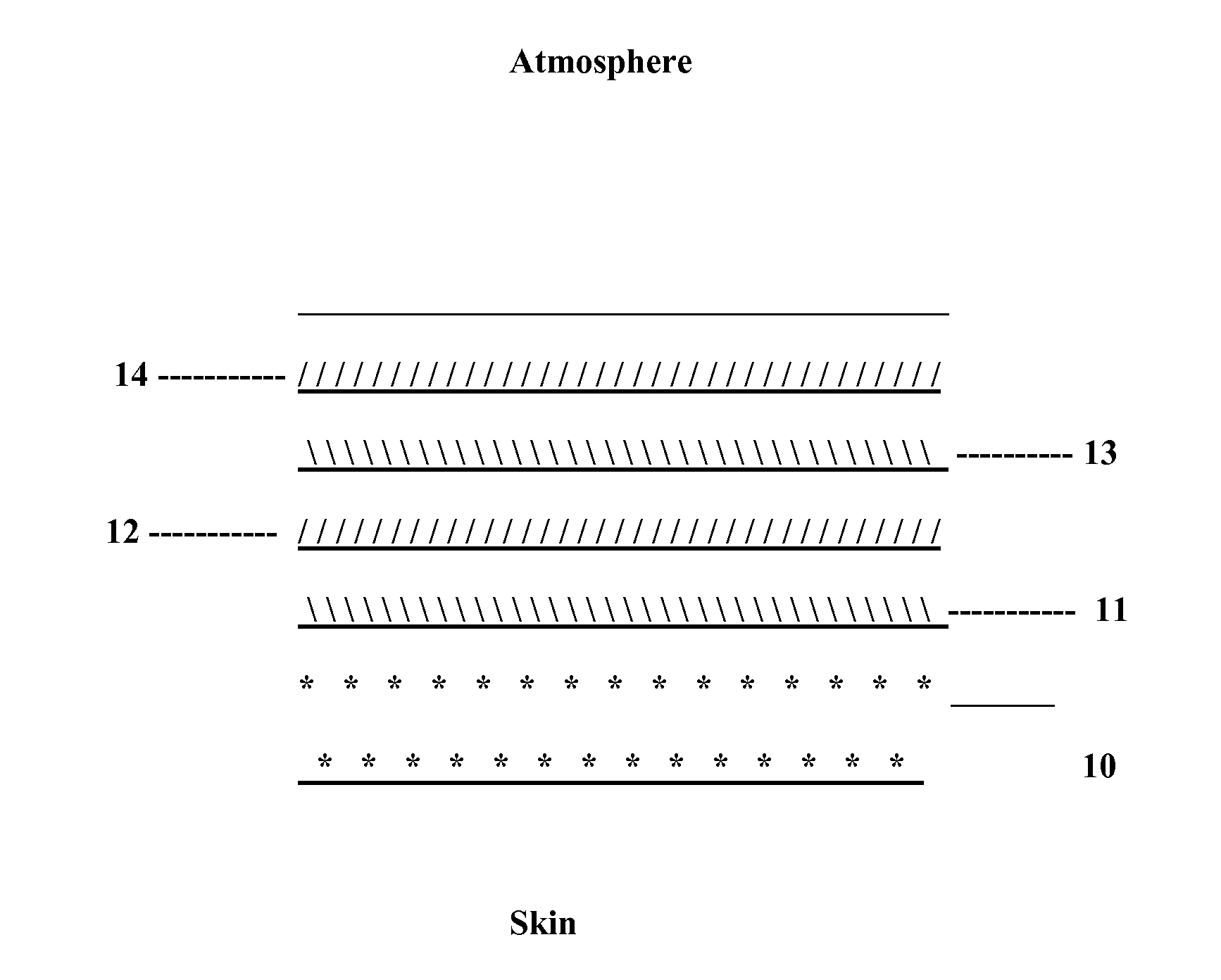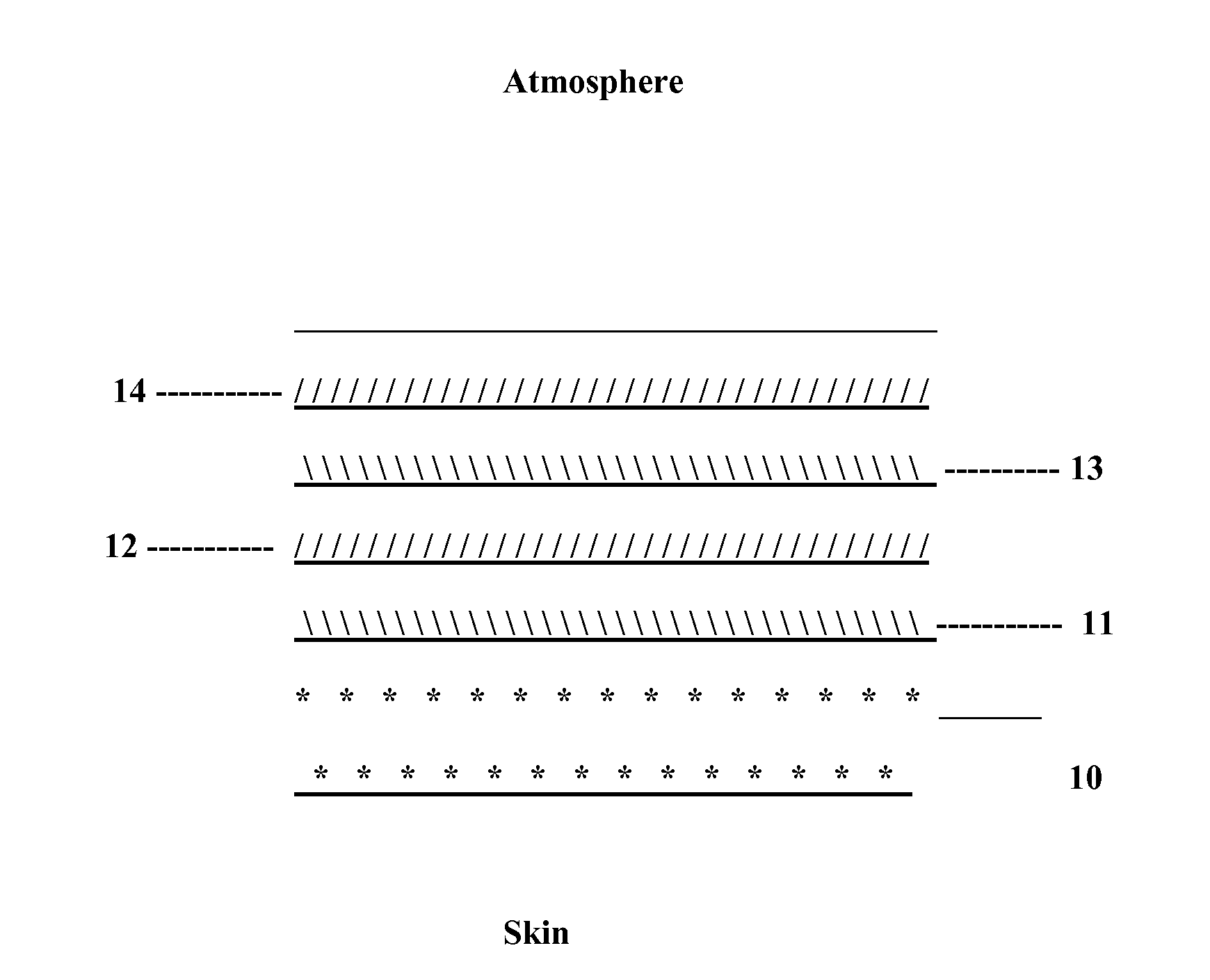Flash fire and chemical resistant fabric and garments
a technology of fabric and garments, applied in the field of chemical protective clothing, can solve the problems of limited radiant heat resistance of garments, high cost and difficulty in manufacture, and marginal fr
- Summary
- Abstract
- Description
- Claims
- Application Information
AI Technical Summary
Benefits of technology
Problems solved by technology
Method used
Image
Examples
example 1
[0049]In a first lamination, a 40 gauge single sided metalized PET film was extrusion laminated to a 1.5 mil cast low density polyethylene film using a co-extruded tie layer of low density polyethylene (LDPE) and ethylene acrylic acid (EAA). The approximate weight of the coextruded tie layer was 18 pounds per ream. This first lamination comprises the chemical and radiant heat barrier component of the composite. The first lamination component was subjected to permeation testing per ASTM F739. This data is presented in Table 1 and Table 2, below.
[0050]The first lamination component was then adhesively laminated to a 8.5 oz / yd2 flame retardant treated cotton terrycloth fabric. A 10 oz / yd2 expanding graphite adhesive was used to accomplish this lamination. Physical properties are summarized in Table 4. The flash fire data in Table 3 for Example 1 indicates only a 16% rise in internal temperature as compared to the exposed metalized surface of the '708 teaching. It can be seen that this ...
example 2
[0052]In a first lamination, a 40 gauge single sided metalized PET film was extrusion laminated to a 1.5 mil cast low density polyethylene film using a co-extruded tie layer of low density polyethylene (LDPE) and ethylene acrylic acid (EAA). The approximate weight of the coextruded tie layer was 18 pounds per ream. This first lamination comprises the chemical and radiant heat barrier component of the composite. The first lamination was then adhesively laminated to a 5 oz / yd2 nonwoven fabric of Basofil fibers. A 10 oz / yd2 expanding graphite adhesive was used to accomplish this lamination. Physical properties are summarized in Table 4.
[0053]Example 2 passed flammability when tested per ASTM F1358 and D6413.
example 3
[0054]In a first lamination, a 40 gauge single sided metalized PET film was extrusion laminated to a 1.5 mil cast low density polyethylene film using a co-extruded tie layer of low density polyethylene (LDPE) and ethylene acrylic acid (EAA). The approximate weight of the coextruded tie layer was 18 pounds per ream. This first lamination comprises the chemical and radiant heat barrier component of the composite. The first lamination component was then adhesively laminated to a 10 oz / yd2 flame retardant treated cotton terry cloth fabric. A 13 oz / yd2 expanding graphite adhesive was used to accomplish this lamination. Physical properties are summarized in Table 4.
[0055]Example 3 passed flammability when tested per ASTM F1358 and D6413.
PUM
| Property | Measurement | Unit |
|---|---|---|
| surface temperature | aaaaa | aaaaa |
| height | aaaaa | aaaaa |
| diameter | aaaaa | aaaaa |
Abstract
Description
Claims
Application Information
 Login to View More
Login to View More - R&D
- Intellectual Property
- Life Sciences
- Materials
- Tech Scout
- Unparalleled Data Quality
- Higher Quality Content
- 60% Fewer Hallucinations
Browse by: Latest US Patents, China's latest patents, Technical Efficacy Thesaurus, Application Domain, Technology Topic, Popular Technical Reports.
© 2025 PatSnap. All rights reserved.Legal|Privacy policy|Modern Slavery Act Transparency Statement|Sitemap|About US| Contact US: help@patsnap.com


